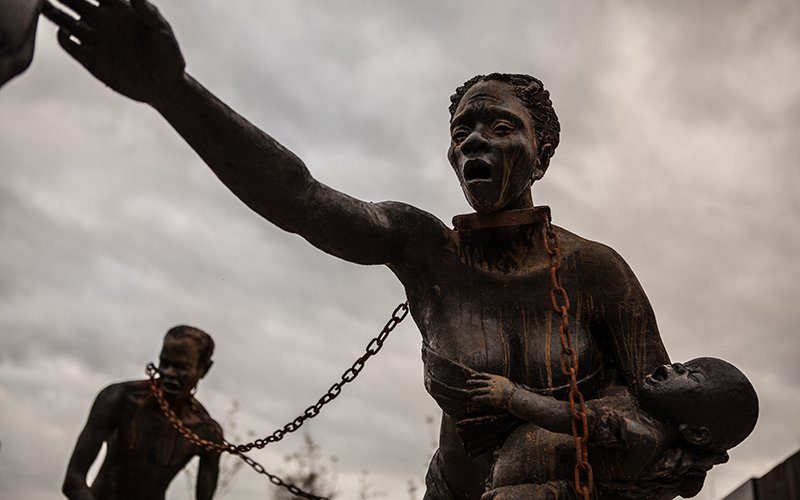The Rebel Yale
 The rebel yell was a battle cry used by Confederate soldiers during the American Civil War, when charging to intimidate the enemy and boost their own morale. The South had seceded in order to protect its ‘peculiar institution’ of slavery which was increasingly under siege by powerful abolitionist forces.
The rebel yell was a battle cry used by Confederate soldiers during the American Civil War, when charging to intimidate the enemy and boost their own morale. The South had seceded in order to protect its ‘peculiar institution’ of slavery which was increasingly under siege by powerful abolitionist forces.
While the Founding Fathers of the United States had proclaimed that all men were equal, this only applied to white men, sometimes Natives who were considered ‘civilised’, but not to blacks, the vast majority of whom were slaves. America was built upon the exploitation of African slaves, creating a racial hierarchy and system of servitude.
At the time racism was mainstream and normalised. Slavery was essential to working the tobacco plantations set up by English colonists in Virginia in the seventeenth century. But it was the colony of Massachusetts, where the Mayflower had brought the Pilgrim Fathers in 1620, that became the first English settlement. Here Boston was founded in 1630.
It was here that Elihu Yale (1649 – 1721) was born, leaving at age of three with his family to settle in London. Yale would join the English East India Company, working at the Fort of St George at Madras, in modern Chennai, where even by the rapacious standards of the time he indulged in illegal profiteering resulted in his being relieved of the post of governor. He was re-appointed as president of the administration of Fort St George on 26 July 1687.
Now he profited in the growing slave trade, enforcing a law that at least ten slaves should be carried on every ship bound for Europe. As judge he also sentenced so-called “black criminals” to whipping and enslavement. When the demand began to increase rapidly, the English merchants even began to kidnap young children and deport them to distant parts of the world.
Charges of corruption against him continued until his removal from the post in 1692. Having amassed a huge fortune from his time in India, Yale was contacted in 1718 by the New England Puritan minister Cotton Mather, notorious for his involvement in the Salem witch trials of 1692. This was to ask for a donation to an institution of learning. Hence the foundation of Yale College, which in 1887 became Yale University. It remains a prestigious Ivy League liberal arts institution to this day.
It is from here that student Shreeya Singh, pursuing a double major in History and South Asian Studies, in 2020 started Students Against Hindutva to combat ‘Hindu fascism’. The irony of this could not be lost.
This hate outfit campaigned against the CAA which gave asylum to victims of religious persecution in Pakistan, Afghanistan and Bangladesh who had fled to India to escape discrimination and forcible conversion to Islam.
However the rise of hate preachers like Shreeya Singh should come as no surprise. In November 2019 UC Berkeley and Yale University researchers suggested that Hindu ‘nationalism’ may be taking root in the minds of India’s Hindu youth. Elihu Yale must be laughing in his grave.
Exclusion
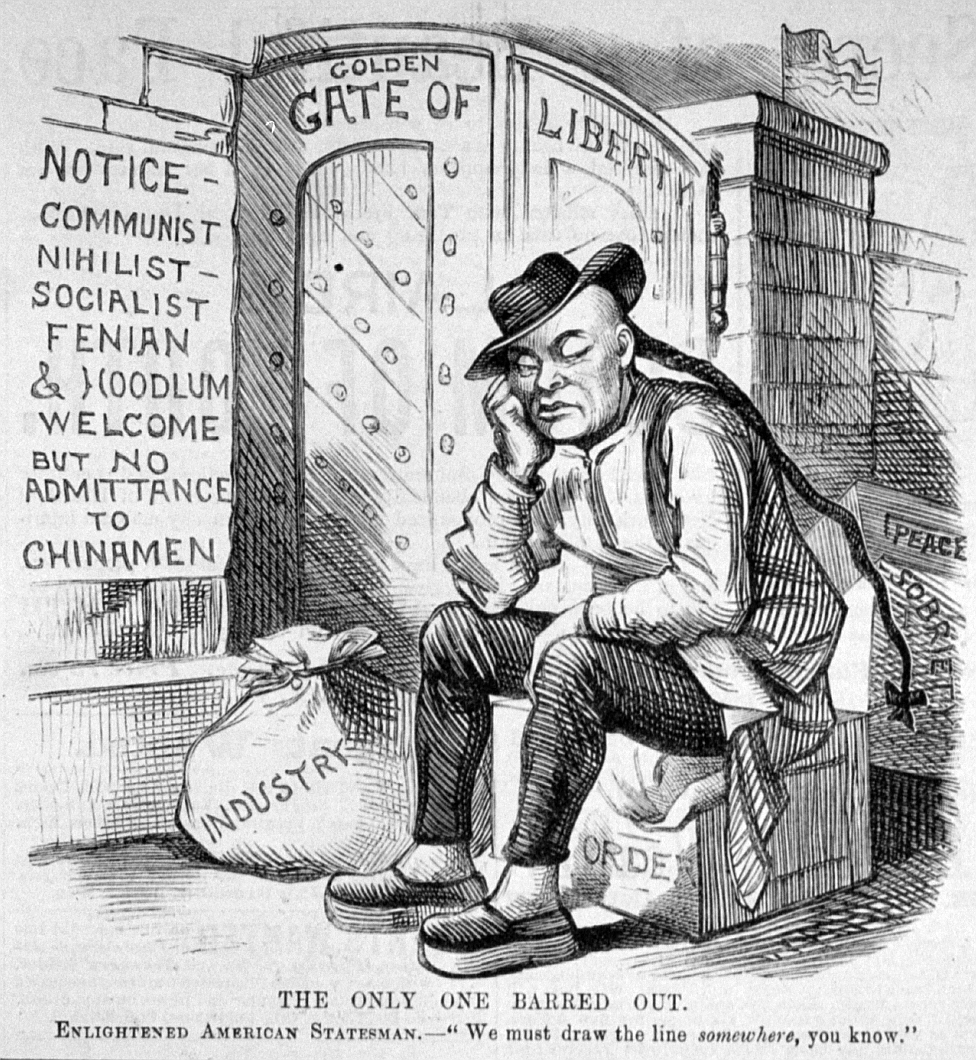 The Naturalization Act of 1790 made Asians ineligible for citizenship. This became obvious when in the late nineteenth century significant wave of Indian immigrants entered the United States, mostly settling in California, Oregon and Washington states. Chinese migrant workers encountered considerable prejudice in the United States, especially by the people who occupied the lower layers in white society, and Chinese “coolies” were used as a scapegoat for depressed wage levels by politicians and labour leaders.
The Naturalization Act of 1790 made Asians ineligible for citizenship. This became obvious when in the late nineteenth century significant wave of Indian immigrants entered the United States, mostly settling in California, Oregon and Washington states. Chinese migrant workers encountered considerable prejudice in the United States, especially by the people who occupied the lower layers in white society, and Chinese “coolies” were used as a scapegoat for depressed wage levels by politicians and labour leaders.
These xenophobic fears against the alleged “Yellow Peril” led to the implementation of the Page Act of 1875, the 1882 Chinese Exclusion Act, expanded ten years later by the Geary Act. The Immigration Act of 1917 then created an “Asian Barred Zone”.
Indian immigrants thus landed into this toxic environment. The majority whites therefore looked upon these ‘Hindoos’ with contempt, much as they had with larger waves of Chinese and Japanese immigrants, as well as the larger settled Chicano and African-American populations.
In 1913, the Alien Land Act of California prevented Asiatics from owning land.  This was not changed until 1952. In the 1923 case, United States v. Bhagat Singh Thind, the Supreme Court ruled that Indians were not “white persons” and were therefore racially ineligible for naturalized citizenship. Thind argued using “a number of anthropological texts” that people in Northwestern India belonged to the “Aryan race”, citing scientific authorities such as classifying Aryans as Caucasian.
This was not changed until 1952. In the 1923 case, United States v. Bhagat Singh Thind, the Supreme Court ruled that Indians were not “white persons” and were therefore racially ineligible for naturalized citizenship. Thind argued using “a number of anthropological texts” that people in Northwestern India belonged to the “Aryan race”, citing scientific authorities such as classifying Aryans as Caucasian.
The Court argued that the racial difference between Indians and whites was so great that the “great body of our people” would reject assimilation. Not only were new applicants from India denied the privilege of naturalization, but the new racial classification suggested that the retroactive revocation of naturalization certificates granted to Asian Indians.
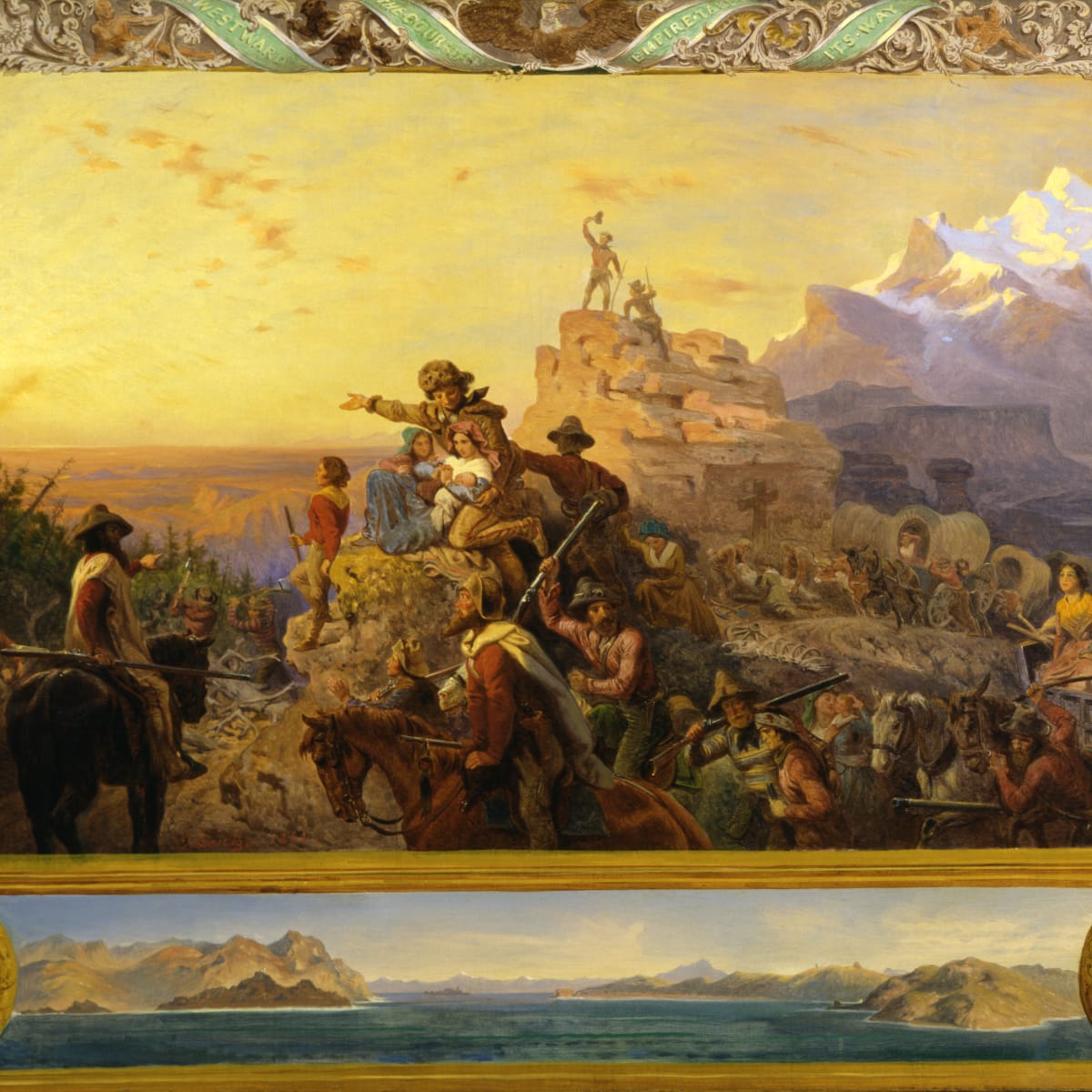 America was a hotbed of racial intrigue, fantasies and pseudo-science. The nation’s Manifest Destiny meant the extermination of the indigenous peoples and their demographic replacement by whites.
America was a hotbed of racial intrigue, fantasies and pseudo-science. The nation’s Manifest Destiny meant the extermination of the indigenous peoples and their demographic replacement by whites.
Until the twentieth century Native Americans were physically liquidated or forced onto reservations and into state boarding schools where they were forbidden to speak their own languages, brainwashed out of their beliefs, and subject to sexual and physical abuse.
The wars against the indigenous Americans was overshadowed by the conflict over slavery which caused the South to secede as the Confederacy. That was quashed by the Union in 1865. The Civil War resulted in Reconstruction in the South which extended full rights to former slaves and suppressed southern white opposition from the White League and Ku Klux Klan.
However federal support was withdrawn in 1877, allowing the Redeemer Movement to roll back civil rights and enforce white supremacy. Well into the twentieth century, southern states enforced racial segregation, disenfranchisement of blacks, and the reinvention of slavery as peonage.
 In his 2012 book Slavery by Another Name, Douglas A Blackman describes peonage, a vast apparatus of human trafficking involving law enforcement, allowing any African-American to be detained on a whim and then sold to private companies as convict labour.
In his 2012 book Slavery by Another Name, Douglas A Blackman describes peonage, a vast apparatus of human trafficking involving law enforcement, allowing any African-American to be detained on a whim and then sold to private companies as convict labour.
The offense could be as trivial as vagrancy or laughing in public. Beatings, rape, torture and death were common, as this slavery was even worse than the plantation variety. Peonage was not abolished until 1951 because by then mechanisation had made this type of servitude redundant.
In Spike Lee’s mockumentary CSA: The Confederate States of America, the South wins the Civil War, and Lincoln flees. Slavery continues with auctions being held online. The reality was not too different. Jim Crow and other forms of segregation were found even outside the South.
By the twentieth century the ‘Lost Cause’ of the Confederacy was being refurbished and glorified. Confederate flags, paraphernalia, chivalry, statues and monuments abounded in the South, and to a lesser extent even other parts of the nation.
The ‘Negro’ was seen as a ‘problem’, as revisionism created a mythology that African-Americans were a burden on white America. The Civil War was rewritten as being over states’ rights and not slavery; which was itself portrayed as a benign institution, even glorified in films such as Gone With the Wind. Contempt for black life was celebrated. With the election of Woodrow Wilson as president in 1912, the South celebrated as now one of their own sons had become the most powerful man in the country. Segregation was increased in federal employment and southern racists dominated in his administration.
The Real Purge
 In the film franchise of the Purge, and the Amazon Prime miniseries, an alternative future of a dystopian America depicts rule by the New Founding Fathers who institute the Purge. This is a 12 hour period where all crime is legal, including murder. Law enforcement and emergency services sit back and allow citizens to kill each other with impunity. It soon becomes apparent that this is no free market theory as the majority of people are not that psychopathic.
In the film franchise of the Purge, and the Amazon Prime miniseries, an alternative future of a dystopian America depicts rule by the New Founding Fathers who institute the Purge. This is a 12 hour period where all crime is legal, including murder. Law enforcement and emergency services sit back and allow citizens to kill each other with impunity. It soon becomes apparent that this is no free market theory as the majority of people are not that psychopathic.
Hence the state itself becomes involved with the use of mercenaries, neo-Nazis and private paramilitaries, who target ethnic minority, homeless and impoverished people as targets for extermination. If this nightmare sounds too farfetched, the reality is that the actual Purge lasted decades. It was called lynching.
Lynchings became a necessary part of white supremacy. Police either stood by or took part in mob violence by racist whites. These crimes emphasised the new social order constructed under Jim Crow; reinforcing their collective white identity along with the unequal status of blacks. Fewer than one percent of lynch mob participants were ever convicted by local courts and they were seldom prosecuted or brought to trial. By the late 19th century, trial juries in most of the southern United States were all white because African Americans had been disenfranchised, and only registered voters could serve as jurors. Often juries never let the matter go past the inquest. Lynchings were family events with children enjoying the spectacle as a rite of passage.
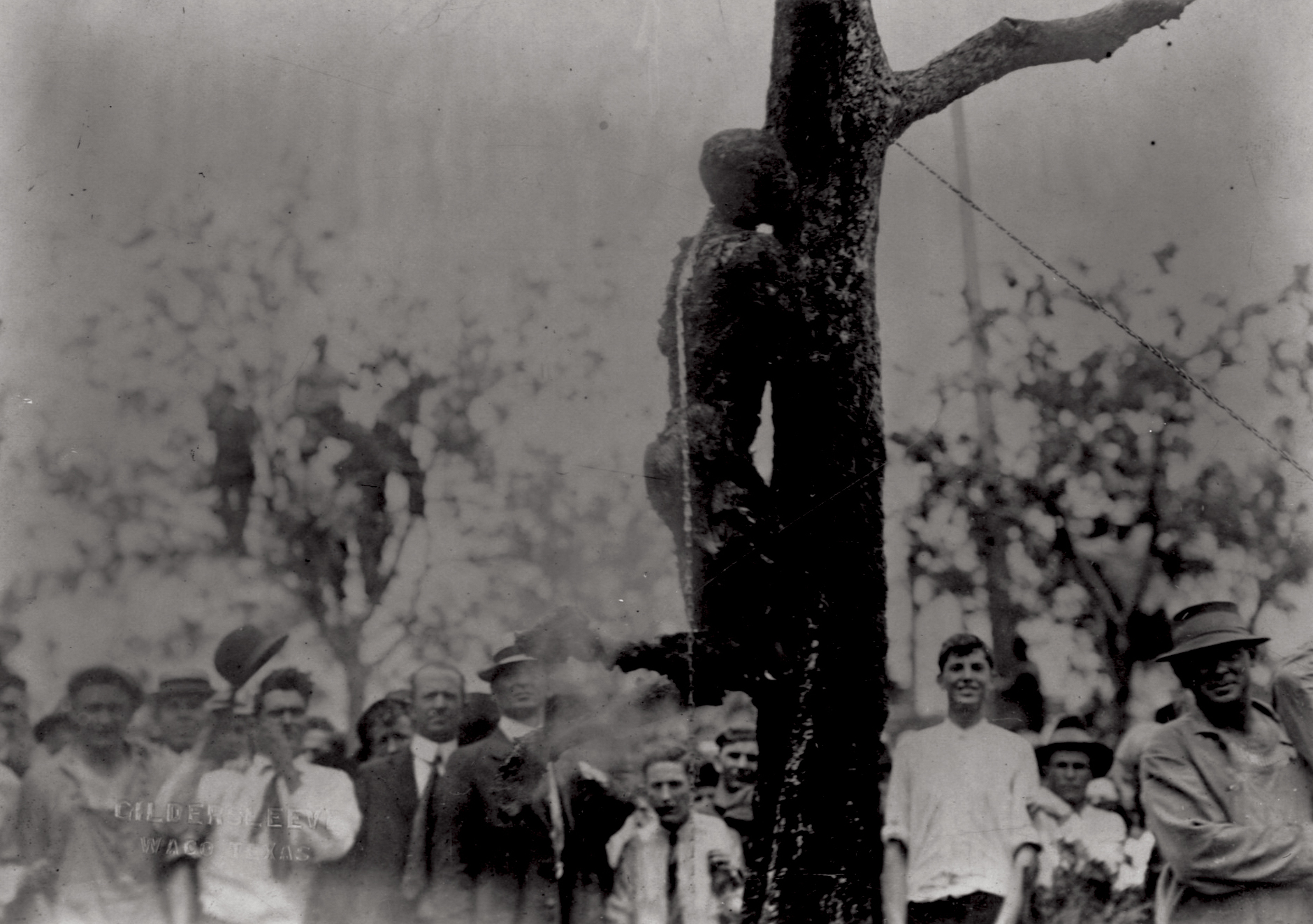 The victims were typically dismembered into pieces of human trophy for mob members. In his autobiography, WEB Du Bois writes of the 1899 lynching of Sam Hose in Georgia.
The victims were typically dismembered into pieces of human trophy for mob members. In his autobiography, WEB Du Bois writes of the 1899 lynching of Sam Hose in Georgia.
He reports that the knuckles of the victim were on display at a local store on Mitchell Street in Atlanta and that a piece of the man’s heart and liver was presented to the state’s governor. In 1916, seventeen year old Jesse Washington was lynched in Waco, Texas, after being dragged from court and castrated.
The lynching drew a large crowd estimated at 10,000 to 15,000 at its peak, including the mayor, John Dollins, and the chief of police, Guy McNamara. There were also many children watching during their lunch hour because parents hoped it would reinforce a belief in white supremacy.
Members of the mob cut off his fingers, and hung him over a bonfire after saturating him with coal oil. He was repeatedly  lowered and raised over the fire for about two hours. After the fire was extinguished, his charred torso was dragged through the town and parts of his body were sold as souvenirs, and pictures of his corpse sold on postcards.
lowered and raised over the fire for about two hours. After the fire was extinguished, his charred torso was dragged through the town and parts of his body were sold as souvenirs, and pictures of his corpse sold on postcards.
By the twentieth century, lynching was photographic sport. People sent picture postcards of lynchings they had witnessed. Although the rhetoric surrounding lynchings frequently suggested they were to protect the virtue and safety of white women, the actions basically arose out of white attempts to maintain domination in a rapidly changing society and their fears of social change.
The South constantly stopped attempts by the federal government to outlaw lynching. Indeed leading southern politicians such as Benjamin Tillman, James Vardaman and Theodore Bilbo defended lynching as necessary to keep blacks in their place. The
Tuskegee Institute tabulated 4,743 people who died at the hands of US lynch mobs between 1881 and 1968. According to these numbers, 3,446 (nearly three-quarters) of those lynched were black Americans.
While blacks were predominantly victims, the virus could spread to others. On March 14, 1891, 11 Italian immigrants were lynched in New Orleans, for their alleged role in the murder of David Hennessy, an ethnic Irish New Orleans police chief. Researchers estimate that 597 Mexicans were lynched between 1848 and 1928.
 Mexicans were lynched at a rate of 27.4 per 100,000 of population between 1880 and 1930, mostly in California, Arizona and Texas. This statistic was second only to that of the African American community, which endured an average of 37.1 per 100,000 of population during that period.
Mexicans were lynched at a rate of 27.4 per 100,000 of population between 1880 and 1930, mostly in California, Arizona and Texas. This statistic was second only to that of the African American community, which endured an average of 37.1 per 100,000 of population during that period.
On October 24, 1871, in Los Angeles, a mob of around 500 whites and Latinos entered Chinatown and attacked, robbed, and murdered Chinese residents. Other acts of violence against Chinese immigrants include the San Francisco riot of 1877, the Issaquah and Tacoma riot of 1885, the attack on Squak Valley Chinese laborers in 1885, the Seattle riot of 1886, and the Pacific Coast race riots of 1907. In 1915, Jewish factory owner Leo Frank was lynched in Atlanta for the alleged rape and murder of own of his own staff, Mary Phagan.
Thousands of African-Americans left the South in the early twentieth century. However, even in northern cities they were segregated and subject to mob violence. The Red Summer of 1919 was marked by hundreds of deaths and higher casualties across the U.S. as a result of race riots that occurred in more than three dozen cities, such as the Chicago race riot of 1919 and the Omaha race riot of 1919. Chicago was the most vicious as white gangs, mostly Irish, invaded black areas looking for victims. The police turned a blind eye or participated.
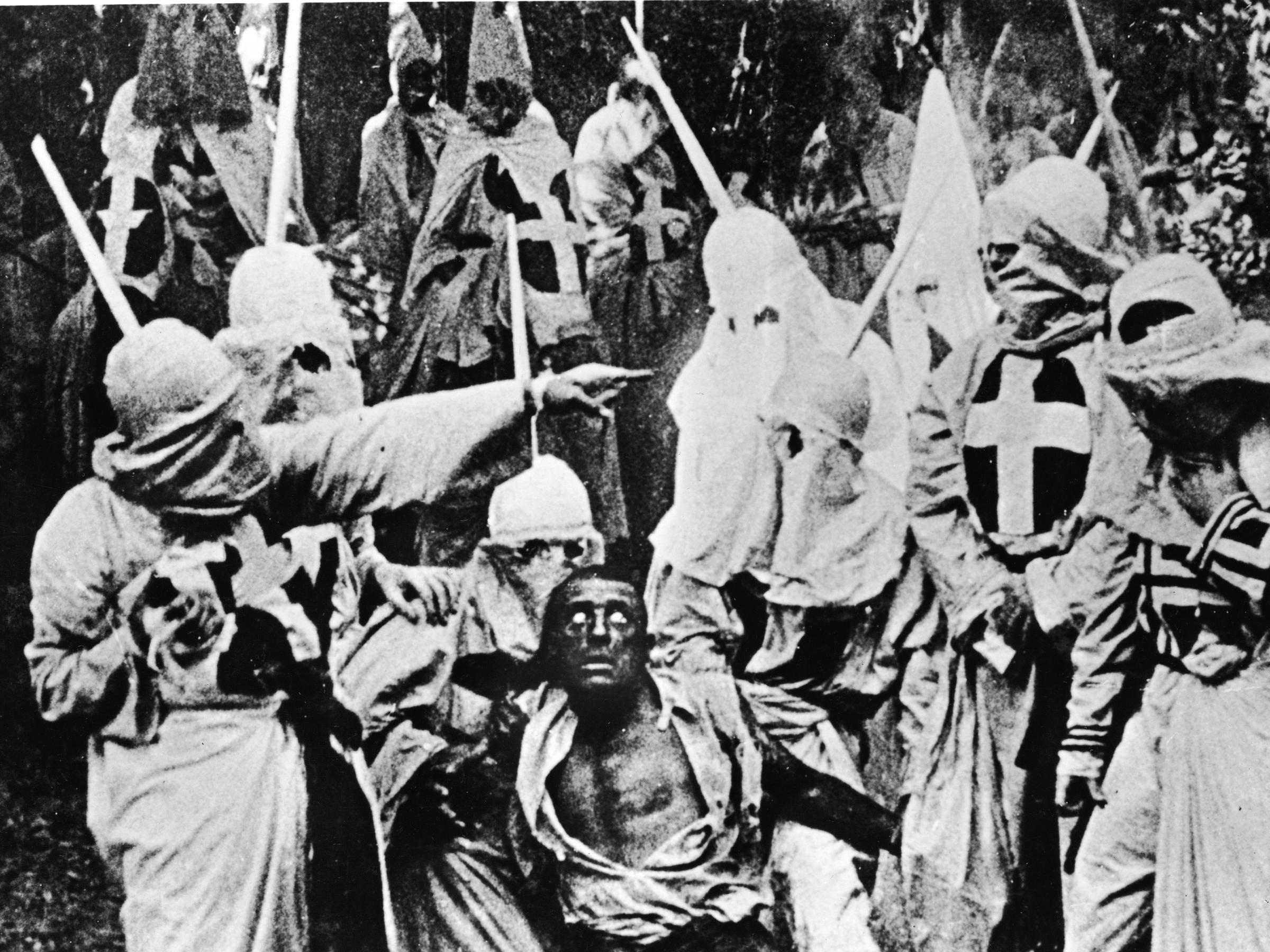
Actors in the garb of the Ku Klux Klan chase down a white actor in blackface, in a still from The Birth of a Nation
A revived Ku Klux Klan by now had nationwide reach and mainstream acceptability. The first feature-length film, The Birth of a Nation (1915), which celebrated the original Ku Klux Klan, was shown at the White House to President Wilson and his cabinet members. The later president, Harry Truman, even became a member at one point.
Theodore Bilbo of Mississippi and other political leaders were also in the Klan. Race riots by whites escalated into pure campaigns of localised genocide. On November 2, 1920, the entire black population of Ocee in Florida was either massacred or expelled.
Between May 31 and June 1, 1921, Tulsa in Oklahoma witnessed the annihilation of its ghetto know as Greenwood or Black Wall Street. They had created their own businesses and services in this enclave, including several grocers, two newspapers, two cinemas, nightclubs, and numerous churches. Black professionals, including doctors, dentists, lawyers, and clergy, served 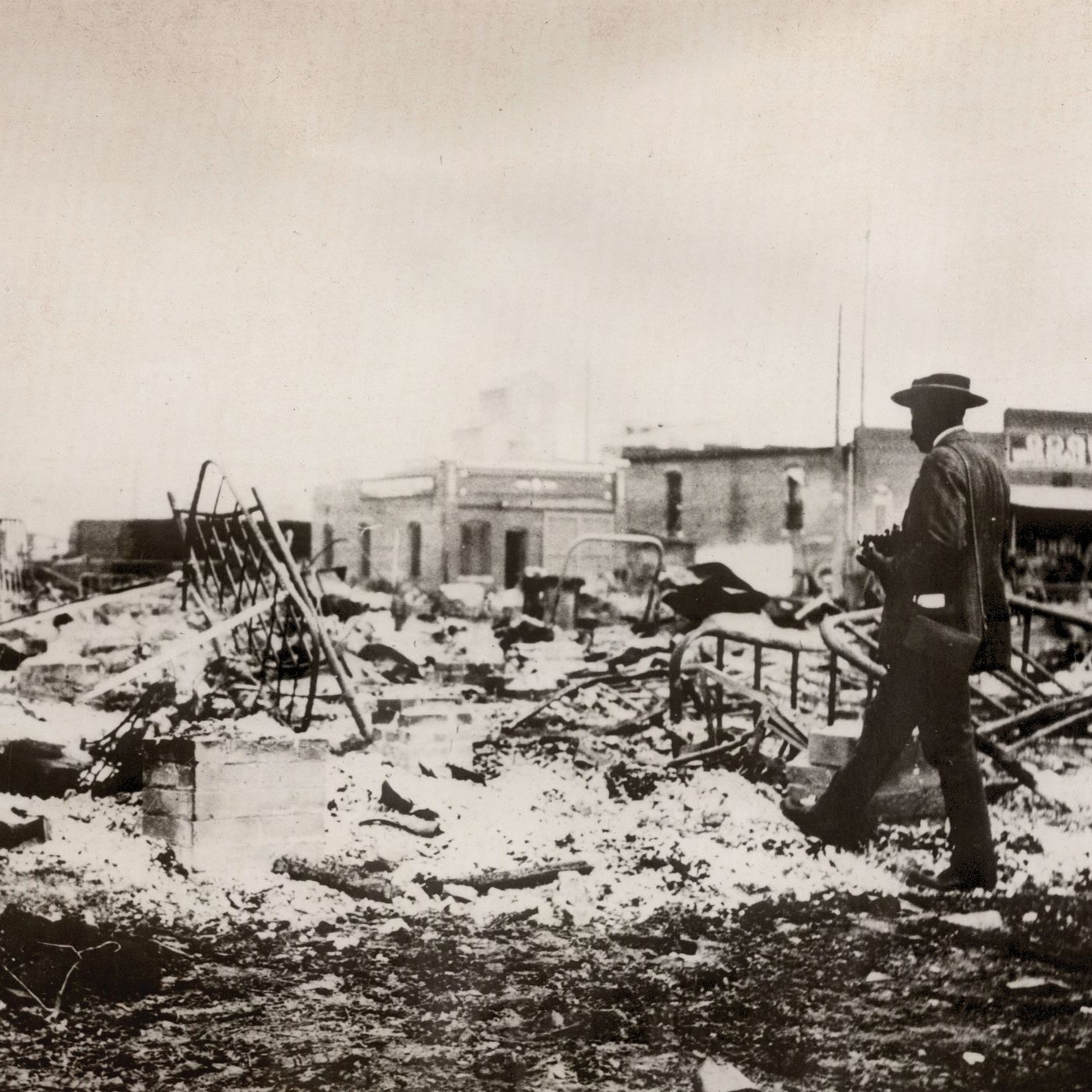 their peers. With police collaborators, white residents went as far as using aircraft to destroy Greenwood and massacre its inhabitants, as blacks vainly tried to hold off the assault. In 1923 the black town of Rosewood in Florida was destroyed and survivors fled to the swamps.
their peers. With police collaborators, white residents went as far as using aircraft to destroy Greenwood and massacre its inhabitants, as blacks vainly tried to hold off the assault. In 1923 the black town of Rosewood in Florida was destroyed and survivors fled to the swamps.
These were just some of the more extreme occurrences that went beyond just being riots. It was these instances of blatant racial extermination and oppression which has led to African-American social issues. Indeed after slavery, former slaves had made incredible progress under Reconstruction.
But this was neutralise as throughout the country, blacks were seen as something less than human. In the Midwest and West, many towns posted “sundown” warnings, threatening to kill African Americans who remained overnight. These “Sundown” towns also expelled African-Americans who had settled in those towns during Reconstruction and before. In parts of the West, this was extended to include Latinos, Chinese, Japanese or Native Americans.
American Aryan Destiny
Through violence and legal restrictions, whites often prevented blacks from working as common labourers, much less as skilled artisans or in the professions. Under such conditions, even the most ambitious and talented black people found it extremely difficult to advance.
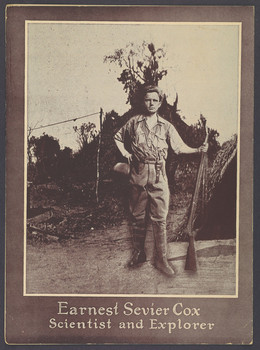 This led into the racial fantasy that whites were superior, something which was mainstream thinking with writers such as Maddison Grant, Lothrop Stoddard and Ernest Sevier Cox. This helped restrict immigration to superior Nordic types. Faced at such a brick wall of indifference and hostility, any blacks formed their own version of separatism. Marcus Garvey said that African-Americans would have no place in a white country and should leave for Africa. He himself was deported for misuse of funds, and went back to his native Jamaica.
This led into the racial fantasy that whites were superior, something which was mainstream thinking with writers such as Maddison Grant, Lothrop Stoddard and Ernest Sevier Cox. This helped restrict immigration to superior Nordic types. Faced at such a brick wall of indifference and hostility, any blacks formed their own version of separatism. Marcus Garvey said that African-Americans would have no place in a white country and should leave for Africa. He himself was deported for misuse of funds, and went back to his native Jamaica.
The fallout the coalesced into other organisations notably the Nation of Islam founded in the 1930s by Farad Muhammad, and taken over by Elijah Muhammad. As late as 1946 Theodore Bilbo, senator and former governor of Mississippi was pushing for all blacks to be deported to Liberia and writing in support of Garvey’s scheme. Phi Delta Phi, the fraternity of Yale University’s law school, voted only in 1949 to eliminate from its constitution a clause restricting membership to “males of the Aryan race.” Aryan was not a category unique to Hitler’s Germany at the time. Now it remains lingering in liberal arts, in departments studying South Asia, like a disease for which the vaccine is being deliberately withheld.
What helped entrench the apparatus of democracy in America was a high percentage of land ownership. However, as with Australia, New Zealand and South Africa, this was only possible because vast stretched of wilderness were available due to the indigenous people being dispossessed.
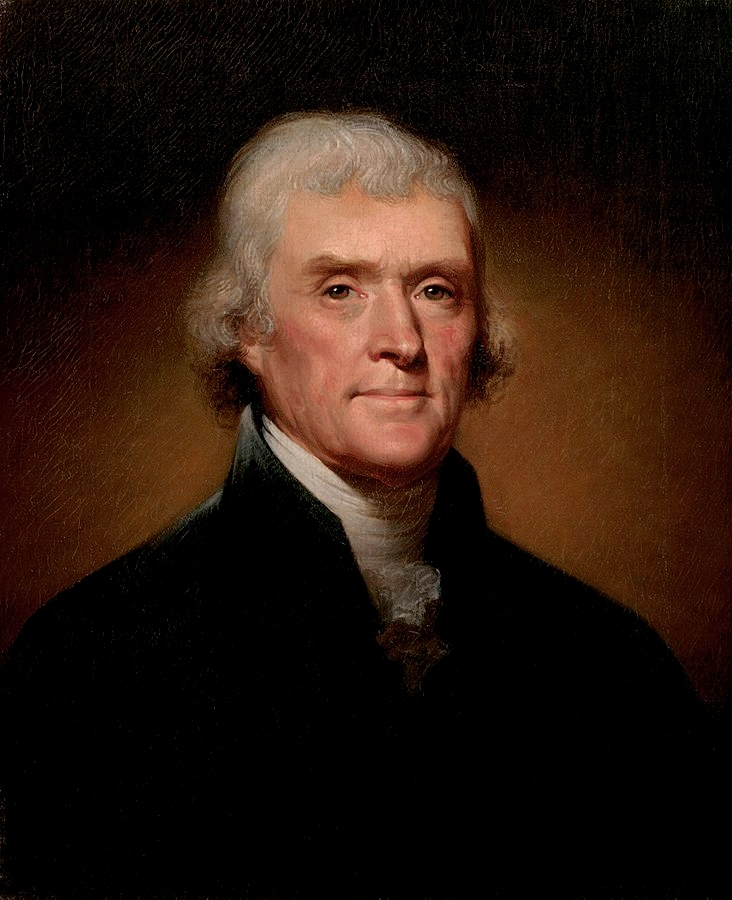 Thomas Jefferson spoke of the need to “eliminate” or “extirpate” Native Americans. Hitler praised American restrictions on naturalisation and saw the extermination of natives as the template for his Lebensraum (living space) in Poland and lands to the east, where Slavs would be herded onto reserves to serve the master race of Aryans. America also pioneered in eugenics. Those deemed unfit were compulsorily sterilised. the poor, the disabled, the mentally ill, and specific communities of African American, Hispanic, or Native American peoples.
Thomas Jefferson spoke of the need to “eliminate” or “extirpate” Native Americans. Hitler praised American restrictions on naturalisation and saw the extermination of natives as the template for his Lebensraum (living space) in Poland and lands to the east, where Slavs would be herded onto reserves to serve the master race of Aryans. America also pioneered in eugenics. Those deemed unfit were compulsorily sterilised. the poor, the disabled, the mentally ill, and specific communities of African American, Hispanic, or Native American peoples.
By 1933, California had subjected more people to forceful sterilization than all other U.S. states combined. The forced sterilization program engineered by the Nazis was partly inspired by California’s.
The Rockefeller Foundation helped develop and fund various German eugenics programs,  including the one that Josef Mengele worked in before he went to Auschwitz. The one drop rule to define anyone with African blood as black, preceded the Nuremberg race laws. Between 1932 and 1972 by the United States Public Health Service deliberately infected African-American men with syphilis, and were specifically chosen because of ideas that blacks were inferior. The Nazis had a ready made template in the very land they so often despised because it was too black and Jewish for them.
including the one that Josef Mengele worked in before he went to Auschwitz. The one drop rule to define anyone with African blood as black, preceded the Nuremberg race laws. Between 1932 and 1972 by the United States Public Health Service deliberately infected African-American men with syphilis, and were specifically chosen because of ideas that blacks were inferior. The Nazis had a ready made template in the very land they so often despised because it was too black and Jewish for them.
Beyond Black and White
 In 1994 brothers James Ronald and Walter Donald Kennedy wrote The South Was Right!. Obviously the title suggests that they want to exonerate the Confederacy for being the evil entity which enslaved blacks. But the Kennedys do bring out some interesting details, notably a commonly used one that the war was about states’ rights, and not slavery.
In 1994 brothers James Ronald and Walter Donald Kennedy wrote The South Was Right!. Obviously the title suggests that they want to exonerate the Confederacy for being the evil entity which enslaved blacks. But the Kennedys do bring out some interesting details, notably a commonly used one that the war was about states’ rights, and not slavery.
However, it is a fact that the more industrial North had become rich on slavery, especially the cotton harvested on plantations. Yankee economic interests prevented the South from eradicating slavery.
Because blacks had economic value as slaves, the northern slave-free states treated them worse because whites feared labour competition. Oregon, Illinois, New Jersey and Massachusetts passed laws to prohibit black settlement. In addition, Lincoln’s Emancipation only applied to the Confederacy,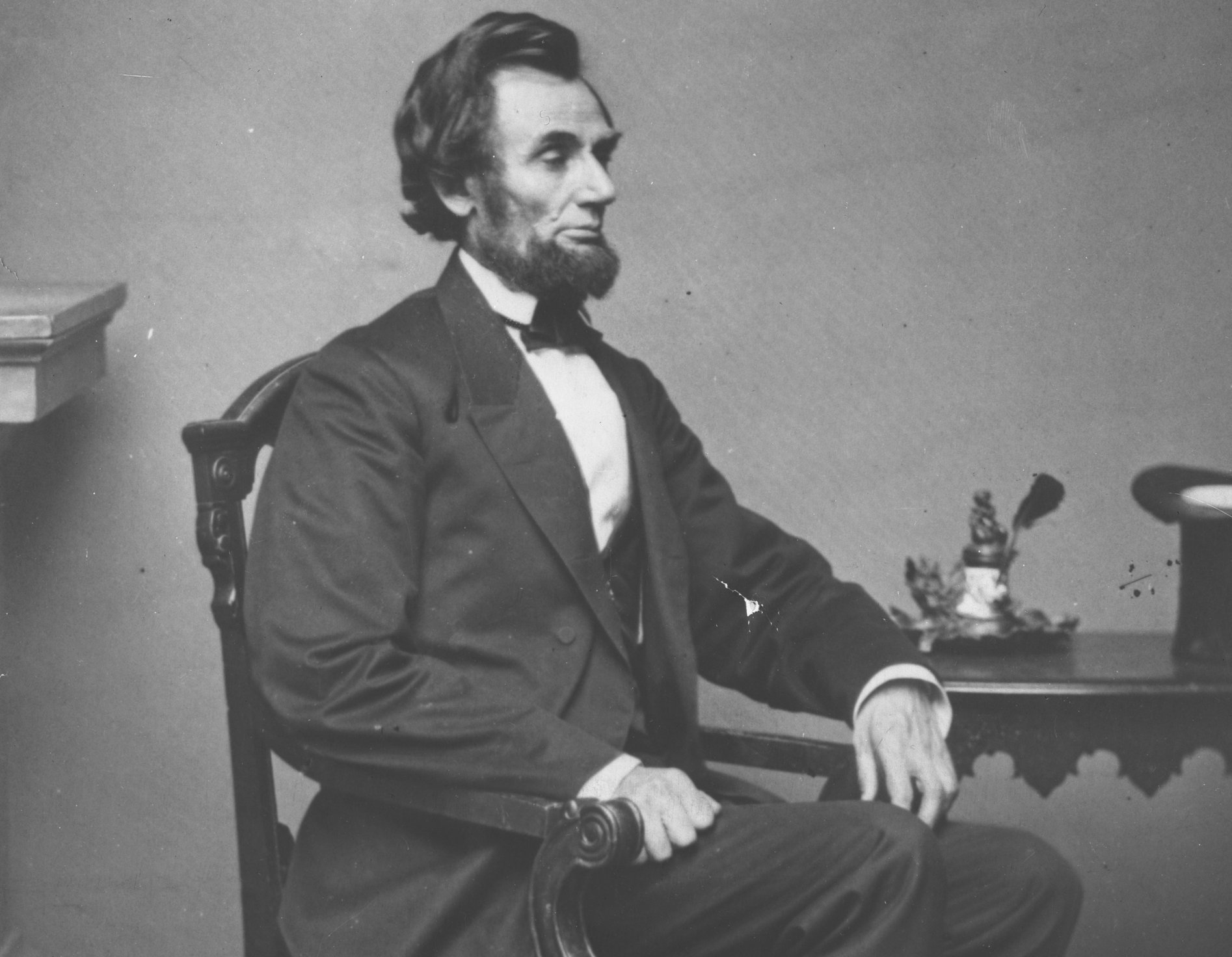 not the slave states that had remained within the Union. Hence the Union general Ulysses S Grant, later president himself, continued to own slaves.
not the slave states that had remained within the Union. Hence the Union general Ulysses S Grant, later president himself, continued to own slaves.
Lincoln was himself racist and wanted freed slaves to embark on their own exodus, preferably to Africa, as they could never be equal to the whites. In 1862 had 39 Native American prisoners executed after they revolted in Minnesota.
Black slaves did not rise up against the Confederacy, and many fought alongside their masters in the South. Union troops meanwhile were not always seen as liberators as they pillages farms and raped the slaves on them, such as in Athens, Alabama. Slaves were also forced to serve invading Union armies. The Native Americans, notably the Cherokee also fought for the South. Missing from the dominant narrative is the mention that not only did Cherokee own slaves, but free blacks in the south also owned other blacks.
 Of course most blacks fighting for the South were actually forced labour, supporting supply lines and other logistical areas. Only as the South was losing was the idea mooted and the irony not lost. But the Kennedys do demonstrate that the North was far from the force of undiluted liberation.
Of course most blacks fighting for the South were actually forced labour, supporting supply lines and other logistical areas. Only as the South was losing was the idea mooted and the irony not lost. But the Kennedys do demonstrate that the North was far from the force of undiluted liberation.
This was most evident in politics. The Republican Party had coalesced around forces opposed to slavery. From 1830 blacks, including slaves, were being forced out of artisan trades such as tanners and tailors, due to hostility from whites and the trade unions which they were forming. Increasingly from the 1840s, Irish immigrants were edging blacks out further from these trades.
The Irish themselves were looked down upon, sometimes, worse than blacks. In the South they were treated worse than slaves because they were deemed to be cheaper. Nevertheless the Irish were courted by political forces opposed to the nativism which rejected the vilification of these Catholic immigrants. This was replaced by a stronger racial identity as ‘white’. Led by southern slave owner and planters, these forces manifested in the Democratic Party.
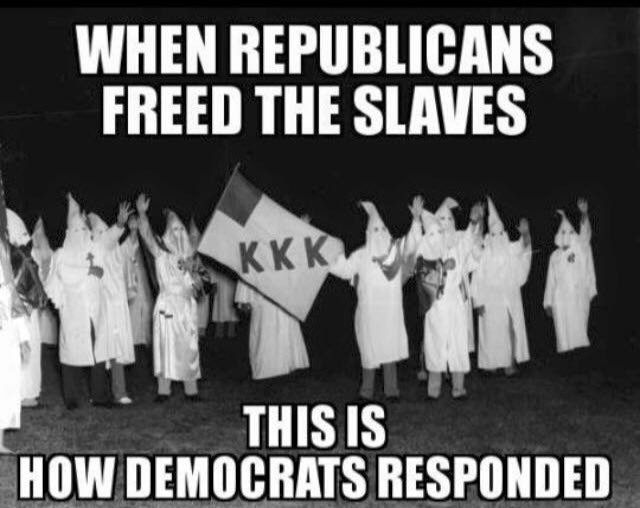 In American politics, not only is the system bifurcated between Democrat and Republican, but various labels which are used as derogatory rather than accurate labels. To the Left in the Democrats, opponents are fascists, capitalists racists, and much else. The conservative forces have found home with the Republicans, and include strict immigration, strong law and order, and against liberal ideas such as abortion, climate change, and state health care.
In American politics, not only is the system bifurcated between Democrat and Republican, but various labels which are used as derogatory rather than accurate labels. To the Left in the Democrats, opponents are fascists, capitalists racists, and much else. The conservative forces have found home with the Republicans, and include strict immigration, strong law and order, and against liberal ideas such as abortion, climate change, and state health care.
Yet as the Civil War dawned, the Republicans were largely abolitionist and the Democrats supported slavery. Reconstruction was forced on the South by Radical Republicans such as Thaddeus Stevens who wanted to give former slaves full rights. It was as leader of the Republicans that Lincoln had fully abolished slavery. The racist White League, Ku Klux Klan, Redshirts and Redeemers were all Democrats. In the South the Republicans were seen as the party of African-Americans and white carpetbaggers and scallywags.
The Democrats represented white supremacy. Wilson, Truman, Vardaman, Tillman Bilbo, were all Democrats. Republicans were totally eclipsed in the South and needed African-American support. This only changed with FD Roosevelt and his social welfare programs which benefited blacks, even while trying to exclude them by making certain low jobs such as farm workers exempt from provisions. The Ku Klux Klan continued to dominate the Democrats in the South well into the 1960s. So now we have the party originating in slavery and white supremacy, supporting civil rights and radical street protests against a Republican president whose party originated in the abolition movement.
Symbols of Hate
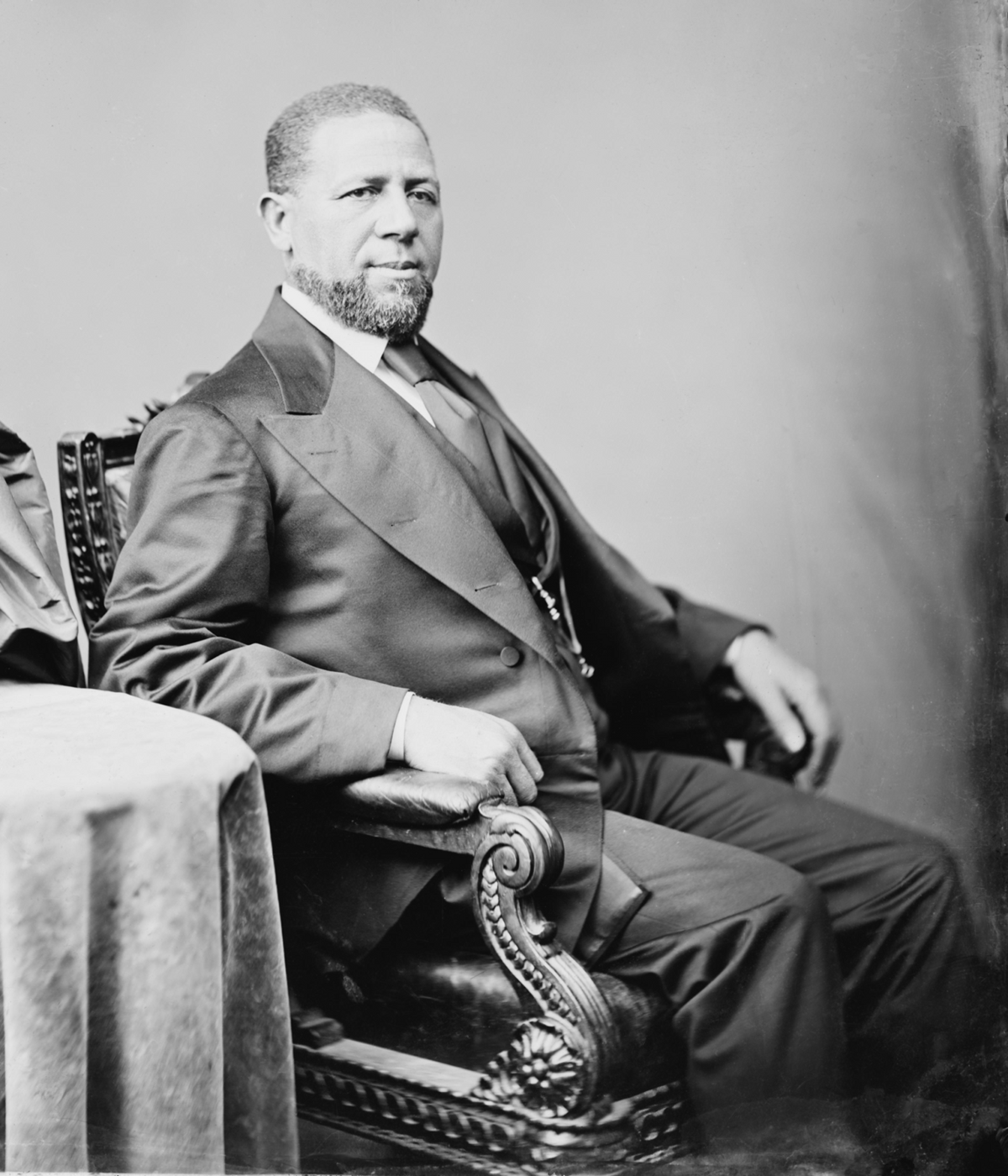 During Reconstruction, the Republicans took control of all Southern state governorships and state legislatures, except for Virginia, and elected numerous African Americans to local, state, and national offices. Blacks in the South made up a core element of the Republican Party, including Hiram Revels who became the first African American to serve in the U.S. Congress when he was elected to the United States Senate as a Republican to represent Mississippi. In 1874, Blanche Bruce was elected to the U.S. Senate, the second African American to serve in the upper house of Congress. On February 14, 1879, Bruce presided over the U.S. Senate, becoming the first African American (and the only former slave) to have done so. He was also a Republican.
During Reconstruction, the Republicans took control of all Southern state governorships and state legislatures, except for Virginia, and elected numerous African Americans to local, state, and national offices. Blacks in the South made up a core element of the Republican Party, including Hiram Revels who became the first African American to serve in the U.S. Congress when he was elected to the United States Senate as a Republican to represent Mississippi. In 1874, Blanche Bruce was elected to the U.S. Senate, the second African American to serve in the upper house of Congress. On February 14, 1879, Bruce presided over the U.S. Senate, becoming the first African American (and the only former slave) to have done so. He was also a Republican.
Such gains were washed away when the Democrats regained control after Reconstruction and reimposed white supremacy. With blacks disenfranchised, oppressed and reduced to revived slavery under peonage. With the growing movement to remove Confederate monuments it is often forgotten how recent these statues of Lee and Davis were, and the fact that they were installed to impose a certain racist narrative. The supporters say this is merely pride in the South. But the fact remains they were part of the process that eliminated blacks from enjoying full democratic rights in the South and are therefore not even consistent with actual history.
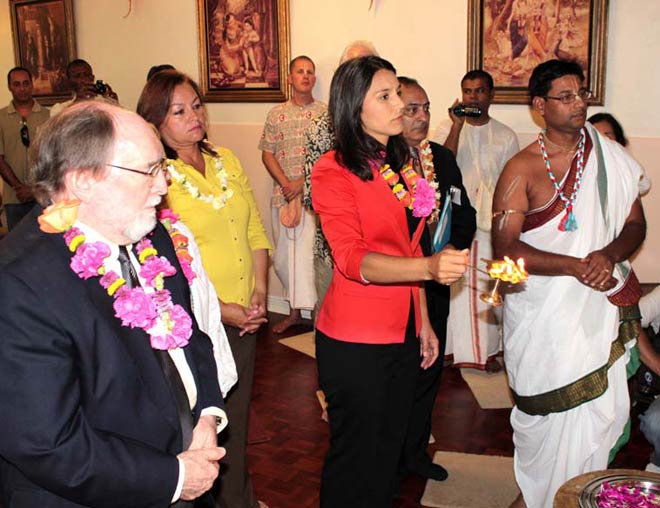 Ironically this is also a case with the Left in America. Shreeya Singh epitomises this phenomena, as does the hatred directed towards Democrat presidential hopeful Tulsi Gabbard in what is now recognised as crass Hinduphobia. Instead the Left pinned its hopes on Bernie Sanders, regarded by many conservatives and Republicans as almost Marxist.
Ironically this is also a case with the Left in America. Shreeya Singh epitomises this phenomena, as does the hatred directed towards Democrat presidential hopeful Tulsi Gabbard in what is now recognised as crass Hinduphobia. Instead the Left pinned its hopes on Bernie Sanders, regarded by many conservatives and Republicans as almost Marxist.
Like Andrew Jackson, Mississippi slave owner around whom the Democratic Party was formed, Sanders represents a modern day mix of reform and prejudice. Jackson was supported by working-class whites and Irish immigrants by expanding the franchise to include all white men.
But he was also instrumental in ethnic cleansing of Native Americans by forced removals and supporting slavery. Similarly Sanders backed essential reforms such as state medical care. Yet he linked this with supporting Pakistan and its jihad against India, being as impervious to the ethnic cleaning and massacre of Hindus, as his predecessor Andrew Jackson was towards Cherokee and other indigenous inhabitants. Now in liberal institutions such as Yale and Harvard, top Ivy League universities, the Aryan Invasion of India continues to be taught as fact.
Not only does this fuel the flames of anti-Hindu hatred which Shreeya Singh so vigorously tap into, but is the legacy of a much older and poisonous time when America was seen as a land for whites only. All others had to be subordinate or exterminated. More than the Confederate flag., this invasion theory is the real hatred in America which needs to be tackled.

